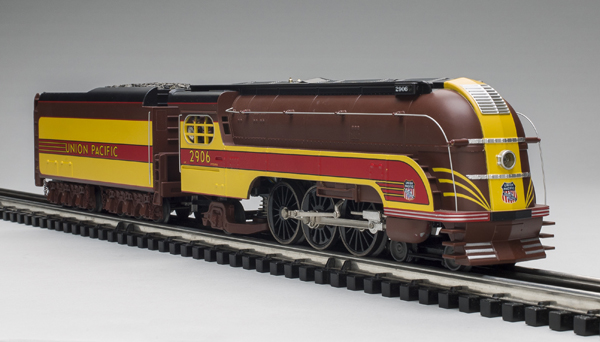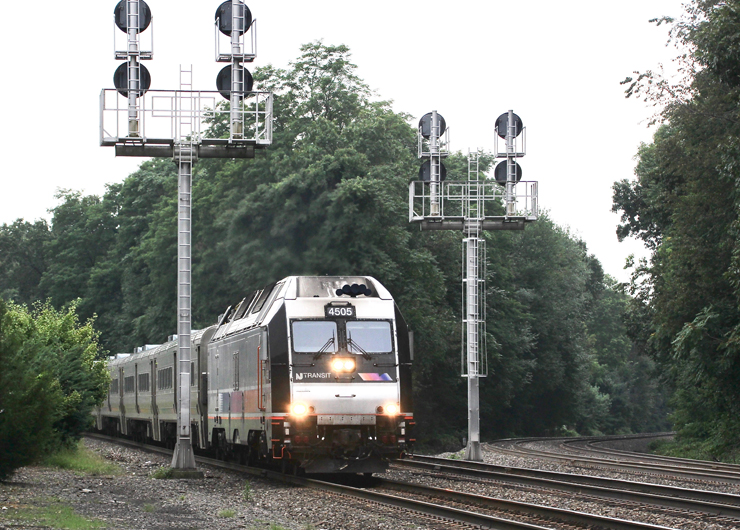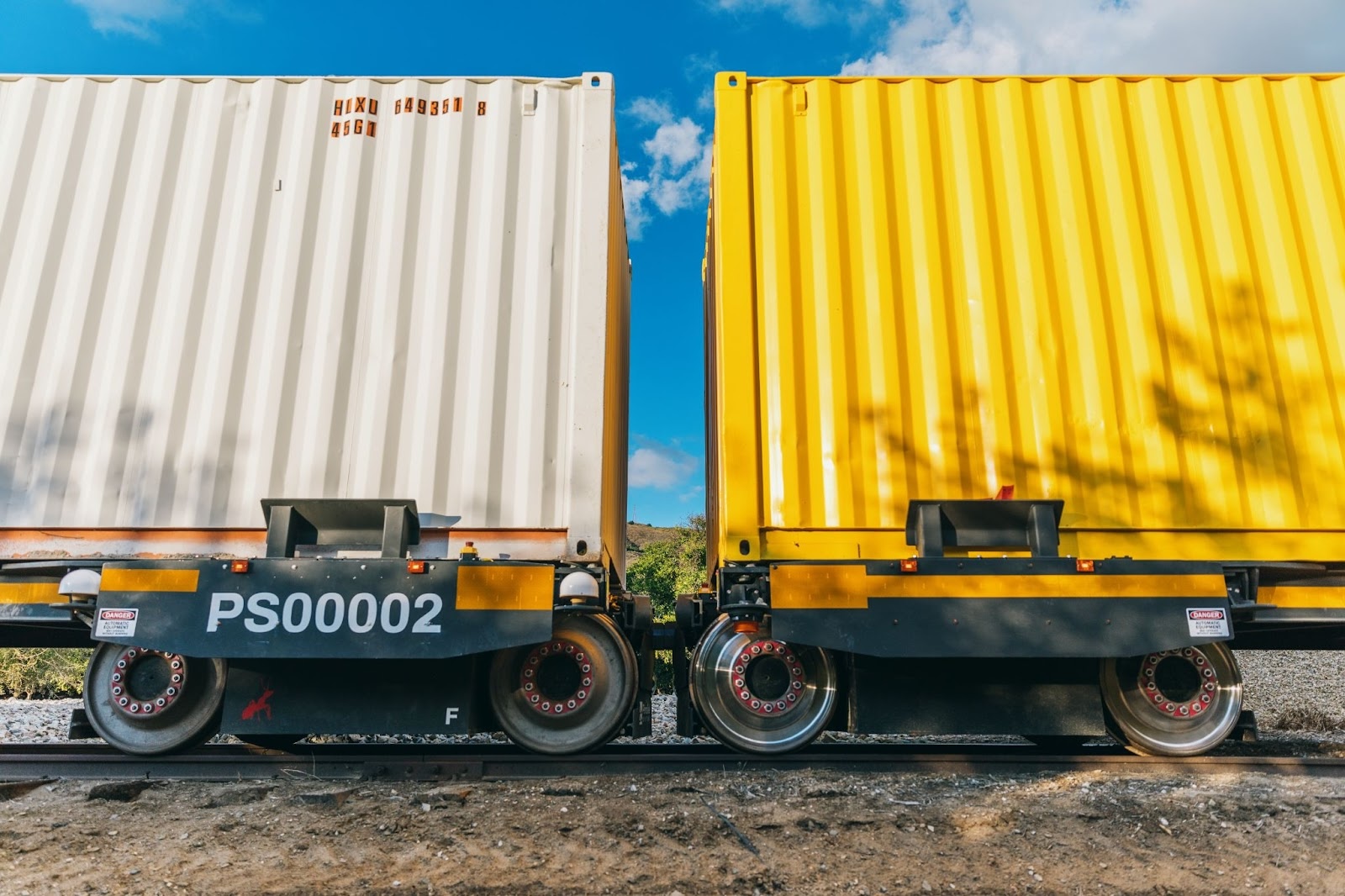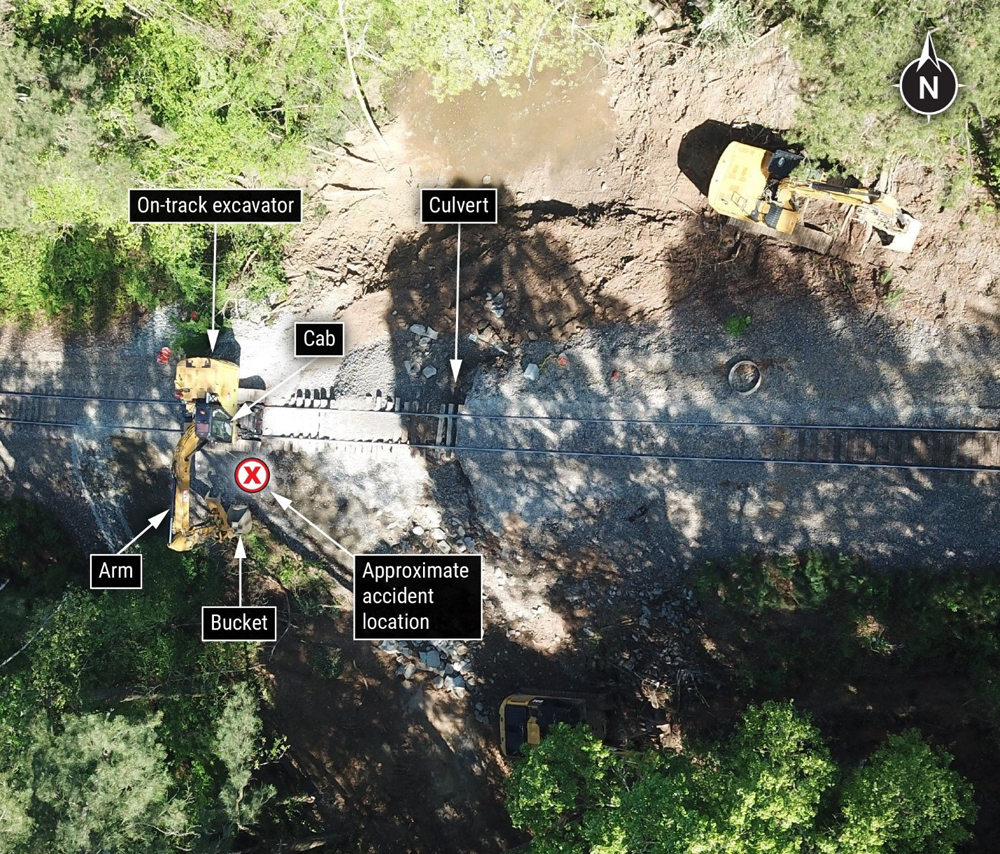MTH O gauge Union Pacific 4-6-2
Price: $499.95 (no. 20648-1) Min Curve: O-31 Cmd Low: 6.1 smph Cnv Low: 7.7 smph High: 64.1 smph Drawbar pull: 2.1 lb. Features: Two can-style motors, ProtoSound 3.0 command and sound system, smoke unit, coil coupler on tender Current-production road names: Baltimore & Ohio, Lehigh Valley, Norfolk & Western, Southern Pacific, and Union Pacific

In the world of streamlined steam-powered locomotives, it would be fair to say the goal was a visual statement of something akin to a bullet passing through air. Some designs achieved this end: the New York Central 4-6-4 Dreyfuss Hudson, the Norfolk & Western J-class 4-8-4 Northern, and the Baltimore & Ohio Royal Blue 4-6-2 Pacific. Other locomotives varied from this premise, including the Pennsylvania RR’s T1 (axe head), the New York Central’s Commodore Vanderbilt (overturned wash tub), and the Union Pacific’s 49er (getaway car).
Yes, I said getaway car. The 49er looks fast and built for rugged use, like the New York Central’s Mercury. I can envision William Bendix at the throttle as he and Humphrey Bogart pull off a heist of a Railway Express Agency car full of gold. Walter Brennan will be hanging out the side of the cab, looking for pursuers. When the railroad tries to pull that heavyweight coach over the junction crossing to stop them, this baby will blast right through. Next stop, Canada!
Suffice it to say, the Union Pacific 49er looks like a hard-working locomotive and not some frilly lightweight steamer just off the local milk run.
The 49er was one of two Union Pacific locomotives streamlined to act as power for the passenger train of the same name. The 49er was created as a once-every-five-days train to supplement the City of San Francisco. This helped speed additional passengers to the celebrated Golden Gate International Exhibition held in San Francisco in 1939 and ’40. One locomotive was the no. 7002, an Alco 4-8-2 Mountain. The other was the no. 2906, a Baldwin 4-6-2 Pacific. The train ran from 1937 to 1941. The streamlining came off in 1942.
Opening the box
First impression: Heavy and compact. Very brick-like. It feels like a loaded ammo can. I’m guessing the difference is the shape and thickness of the die-cast metal shell.
The nose of the 49er is smooth, but with a raised band running up from the pilot to the stack area.
Two metal belts overlap this ridge, and each has wingtips at the ends. A photo of the prototype reveals hinges on both sides, but I can’t find any means to open them, other than removing the pins from the hinges. Design element or practical (though mysterious) hatch, who knows? I prefer to think it reinforces the nose, lest it be shaken apart by the vibrations at speed.
The pilot is a solid design that suggests a plow for snow. There is a set of three steps running up each side of the pilot.
The headlight is centered in the middle of the nose. Crowning the front are vents for an air duct system to facilitate the efficient flow of smoke along the body.
What is cool about this is that along the roofline of the shroud there are recesses for hardware, such as whistles and pop-off valves. This isn’t unusual for streamlined models. But there are clearly designed channels to facilitate air flow and reduce resistance. This is a very interesting visual element!
The number boards are on the sides of the boiler, and there is a handrail running from the pilot to the cab. The running boards have a curved side that fits right in with the curvature of the shell. Save the topside appliances, the sides are smooth, other than the seams and some rivets.
The cab has an interior painted brown. There are two crew figures. The decorated backhead has white-faced gauges and red valve handles. There is a light in the center of the backhead.
The cab’s side window bars are very thick. They seem more like bars from the movie 20,000 Years in Sing Sing than window frames. I was surprised that prototype photos revealed they match the thickness on the model.
The sides of the cab have grab irons for the crew to use getting into the cab. Interestingly, the cab roof of the 49er is flat! I’m not sure I’d seen a modern (post-World War I) steamer with a flat top!
The tender is a tall, square hunk of metal with nicely designed curves at the top of the car sides. There are steps and grab irons on the front of the car. The coal load is the chunk type and not cast in.
The car mounts three axle trucks. There is a ladder, rather spiffily attached to the rear on the fireman’s side. There is a backup light in the middle of the car’s rear flank. The locomotive is equipped with MTH’s wireless drawbar.
The paint scheme was delightful. A livery unlike what we expect from the Union Pacific! The brown, red, and yellow would have stood out on the point of a streamliner. I particularly liked the cat’s whiskers on the nose. One author noted the two colorful 49er locomotives virtually became the public face of the railroad during their short life.
The Union Pacific’s Overland Route logo was applied to the nose and on the sides at roughly the steam chests. The name “Union Pacific” was placed on the tender with accent striping that suggested movement.
On the test track
This O gauge model was a mover! It ran well at low speeds and had enough mass to make the test track vibrate when the throttle was open wide. The sound package was good, with deep sounds and a nice whistle. Right out of the box, the model produced enough smoke to fill the skies of Train Town without any fluid needing to be added.
I experimented with different car and weight combinations, and there was no change in the locomotive’s performance. It was steady throughout the testing.
The tender’s coil coupler worked flawlessly, even during the oft disastrous “speed up, uncouple the car, and open the switch after the locomotive but before the train game.”
The speed range was good, ranging from 6 scale miles per hour on the low end to 64 scale mph on the high side. I was more than a little surprised that the drawbar pull exceeded 2 pounds. I checked it a few times, and it was at or just higher than that number. So I think we may have a good freight hauler here, too!
I love the fact that these RailKing steamers give operators with modest layouts (or budgets) a chance to field an amazing variety of locomotives that are affordable and built as well as their Premier Line cousins. If you’re a Union Pacific fan or have an eye for unique streamlined steam, check this out at your local MTH retailer.













